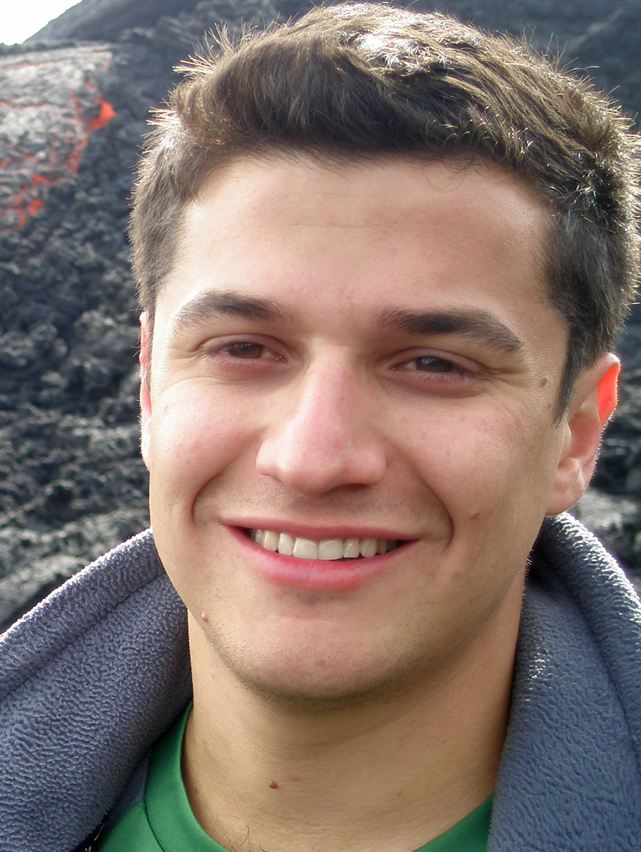Geosciences professor receives grant to study Virginia volcanoes

It’s been about 200 million years since the last magma-producing tectonic event in what is now the east coast of the United States and it has been thought the area had no volcanic activity.
However, Esteban Gazel, assistant professor of geosciences has recently received a three-year, $353,097 grant from the National Science Foundation GeoPrisms Program to work with Elizabeth Johnson, assistant professor of geology and environmental science at James Madison University, to study volcanic activity in Virginia.
After the last magma event during Pangaea break-up 200 million years ago, the eastern coast of North America from Florida to Nova Scotia became what is known as a ‘passive margin,’ an area that is not supposed to have volcanoes or earthquakes.
“There are always exceptions in our dynamic planet,” Gazel said. “There was another pulse of volcanic activity in the area 25-50 million years ago that many geologists aren’t aware of and we’ve produced preliminary data proving there are very young volcanic remnants in Virginia that have a particular geochemistry that is very different, with a unique chemical composition, from anything else in the eastern U.S."
One example is the Mole Hill area just west of Harrisonburg, Va. These lavas have an “intraplate” signature with high magnesium compositions, similar to what you would expect to find in active volcanic zones such as Hawaii or the Basin Range in the western United States. These eastern volcanoes were probably produced by a process called delamination, where dense parts of the earth’s crust and the rigid mantle base of all tectonic plates below it, the lithospheric mantle, ‘sink’ into the plastic asthenosphere layer, which reaches 100-200 kilometers below the surface.
The research being conducted will help the team determine what produced the remnants and how they are related to the tectonics involved in the 2011 earthquakes that registered a magnitude of 5.8 and were centered less than 40 miles northwest of Richmond, Va.
"These volcanic rocks are unique as they also carry samples of the crust and mantle,” Gazel explained. “They provide the only window into the deep architecture of the East Coast. This data is fundamental for geophysical studies that will determine active faults in Virginia.”
Gazel said it is possible that the magmas they will study took advantage of these same faults to reach the surface.
“Even with active volcanoes you can never determine when they might erupt again,” Gazel said. “That’s a field of research itself. But it’s important to evaluate the potential of something like this happening on the East Coast. We have to understand the structure and tectonics of the area.”
Different tectonic settings or meting processes will produce magmas with different chemical signatures. Data collected starting in the Spring of 2013 from samples of lava and volcanic material will be analyzed to collect the necessary chemical data using mass spectrometry, electron microprobe, and X-ray fluorescence at the Department of Geosciences at Virginia Tech.
“We propose to use these magmas, as well as mantle and crust samples within the Virginia volcanoes magmas to determine the depth, composition and evolution of the lithospheric mantle and continental basement under eastern North America,” he said. The team will use an array of geochemical and petrologic observations and modeling and their data will create a vertical cross-section deep into the eastern portion of the continent.
“There will be geophysical studies in the area and our group, which is, as far as I’m aware, the only group to do studies of this nature on the East Coast, will be providing data to help tune the models of those involved with the geophysical studies,” he said.
“Most volcanoes on the planet are at the center of where plates are separating and you don’t see a single edifice (cone). In some places you have a fracture from which magmatic products are released to the surface,” he explained. “What we have in Virginia are remnants, the deeper parts of small volcanoes and the conduits between the deep roots and the shallow parts of a volcanic edifice.”
By the end of the project, Gazel said they hope to find if there are other locations in Eastern North America that might indicate the presence of volcanoes.


